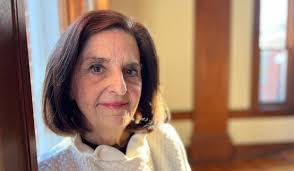Last year, the board of trustees laid out what they believed to be the most critical issues facing Guilford College — mainly issues involving enrollment and retention. These became Guilford’s 10 strategic priorities.
Now, with a new semester underway, many are finding it difficult to measure how far these priorities have progressed.
In order to measure this progress, Guilford has established the Strategic Planning Committee.
“(The SPC) has been working as a group to clarify what exactly we’re up to,” said Mark Dixon, part-time instructor of art and member of the SPC. “We’re not doing as much visioning as we are figuring out how to implement and assess progress on strategic priorities.
“The other thing is that we’re not looking at long-term priorities. We’re looking at things that are actionable on a pretty immediate basis. We don’t really have time to hang around thinking about what’s going on in five or 10 years.”
The committee has been working to ensure the success of each of the strategic priorities as well as to make sure each member of the community hasa voice.
“In order to discern the best way to do that for Guilford, I have assembled a (committee) that includes students, faculty and staff from many areas of (the College),” said President Jane Fernandes in an email to the Guilford community. “We are also exploring ways to further diversify our committee membership.”
“Jane has been very inclusive of the community in all her college-wide efforts,” said Dave Dobson, SPC member and professor of geology and earth sciences. “I think it’s how she likes to operate.
“The strategic planning committee (now officially named the Strategic Planning Oversight Committee) already had student, staff and faculty membership, but Jane has reduced the overall size a bit to make the group more focused, and I hope that will be effective.”
Additionally, the committee has been notably receptive to student voices, even going as far to consolidate the strategic priorities with the list of student demands, which to many, marks incredible progress.
“It has been amazing and empowering to see that we finally have a senior team that is responding to student needs,” said junior Molly Anne Marcotte, student body president and member of the SPC. “Historically, students and student activists have been written off as radical, oversensitive or other insulting and invalidating responses. In this case, students are being taken seriously.”
Many believe that this level of transparency and willingness to cooperate with students has been characteristic of Fernandes’ presidency, which has been met with a very positive reception.
“I think Guilford should serve as a model,” said Marcotte. “When students speak, administrators now listen. Not only do they listen, but they also act upon what they hear.”
Some also are pointing out, however, that such a change has been a long time coming and should very clearly be a top priority of Guilford’s administration.
“It shouldn’t have taken this long because students are fearing for their lives, specifically students of color,” said Marcotte. “That is an immediate concern. I’m happy that the senior team is understanding that student priorities are institutional priorities.”
At the moment, the committee is still in the beginning stages of implementing these priorities. Committee work is well underway however, and tremendous work has already been done to improve Guilford’s image as an institution.
“We used to make grand five-year plans, sometimes with lots of pages of goals and metrics,” said Dobson. “Now, we’re focusing on fewer, more immediate priorities and not looking so far in the future. I think we’ll know more at the end of this year, as the process has really just started going this past fall.”






